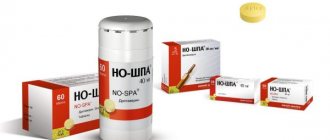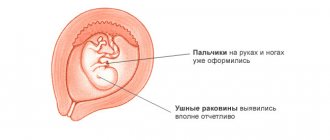Many young mothers know what lactostasis is. It would be better not to know and not to hear about this unpleasant phenomenon at all! But, nevertheless, a larger percentage of women who decide to breastfeed experience milk stagnation. Lactostasis almost always brings with it its faithful companions: pain and lumps.
When breastfeeding, the mother wants to minimize the effects of medications, because they will inevitably enter the baby’s body. Therefore, breast massage for lactostasis is becoming increasingly popular. In this material we tell you what its benefits are, what the technique of the healing procedure is and how to supplement it.
Despite the fact that lactostasis does not belong to the category of diseases, it is imperative to combat this phenomenon. The main danger of inaction by a nursing mother is that there is a risk of milk stagnation developing into a more serious problem - mastitis. If this happens, drug treatment can no longer be avoided, and sometimes a woman even has to resort to surgical intervention.
To avoid this, we recommend doing a massage for lactostasis: it will quickly help you get rid of the unpleasant phenomenon. We don’t know what will surprise you more: the simplicity of the technique or the effectiveness of the massage, but, in any case, information about this procedure for milk stagnation will be useful for any mother who is faced with this problem.
What is milk stasis
The birth of a baby not only fills a woman’s life with new happy colors. Literally every day offers her new problems to solve. Rarely is a woman ready for all of them, especially if she is just beginning to master the role of a mother. Among the common troubles during breastfeeding is stagnation of milk. Unfortunately, no mother is immune from this.
Lactostasis, by the way, is translated as “milk stagnation.” This definition fully explains the essence of the phenomenon. It is characterized by the formation of a milk plug, which blocks the path for new milk. In the place where the plug appears, a characteristic swelling with compaction occurs. In this case, the process is accompanied by painful sensations and poor health of the mother.
At risk
Among nursing mothers, absolutely anyone can experience lactostasis. But most often the problem lies in wait for the following reasons:
- feeding the baby is irregular or the baby refuses it;
- the initiators of the problem may be stress, depression or nervous breakdowns;
- the habit of sleeping on your stomach is harmful for several reasons, one of which is the risk of lactostasis;
- a tight and uncomfortable bra or clothing that doesn’t fit the size compresses the breasts and complicates the circulation of milk;
- mothers who are just starting to get better at breastfeeding also often experience stagnation of milk;
- mothers without experience may have incorrect feeding techniques, in which the baby does not cover the entire areola;
- or the feeding position may be incorrect;
- sometimes the reason lies in hormonal disorders: only an endocrinologist can indicate this;
- Sometimes there are injuries or falls on the chest.
Companions of lactostasis
Milk stagnation in the breast can occur in a mild form, which does not cause significant discomfort to the woman. In this case, there will be heaviness in the chest, pain in the mammary glands of varying degrees, as well as heaviness in this area. When lactostasis occurs in this form, in most cases, the mother helps her baby cope with the problem by eating correctly and regularly.
But there is another option for the manifestation of lactostasis. Sometimes a woman finds out about the problem by more severe symptoms:
- a sharp increase in temperature;
- chest pain is more severe, almost unbearable;
- discomfort increases when pressing on the glands or even touching them;
- Quite large lumps may appear in the chest, causing pain.
Regardless of the degree of lactostasis, it requires mandatory treatment measures, of which massage is a very effective one.
Basic rules of massage
Often the mother regards massage only as an adjunct in the treatment of lactostasis. However, it is the healing technique that is often the main method for eliminating milk stagnation. To make you happy with the effectiveness of this procedure, you should remember a few simple rules:
- It is important to choose the right time for the massage: do it before feeding the baby or before expressing milk. This approach will help you avoid the recurrence of dense, painful formations in the chest.
- With lactostasis, nursing mothers are more likely to develop painful lumps. If the pain is tolerable, we advise you to massage these areas too. The main thing is to do it carefully and gently.
- The intensity of the massage cannot guarantee its effectiveness. On the contrary, aggressiveness and rudeness during manipulation can cause significant harm. The quality of the treatment procedure lies in the correct technique of breast massage for the problem of lactostasis.
- The experience of many mothers has proven that it is more effective to massage the breasts using a rich cream or oil. Just remember to remove any remaining product before feeding.
- For various massage actions, follow the direction from the edges of the breast to the nipple.
- Massage for milk stagnation should cover the entire breast area. You should pay attention not only to areas with compaction: massage the breasts from above, below and on the sides. Don't forget about your armpits.
- Sometimes even light massage actions can cause almost unbearable pain, because sometimes lactostasis is very difficult. In this situation, carry out the procedure in a warm bath or under a gentle stream of a warm shower to relax the muscles and reduce pain. The water temperature should not exceed 37 degrees.
These are the main recommendations for making the breast massage procedure useful in getting rid of lactostasis. Now is the time to learn about the techniques of various exercises in order to get rid of stagnation of milk in the breast as soon as possible.
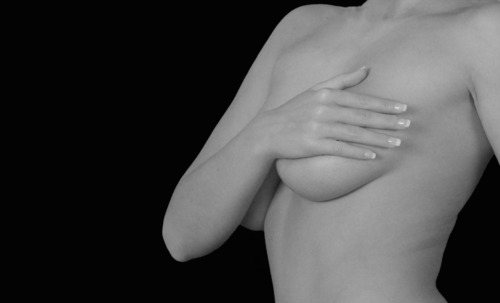
Symptoms of mastitis
The symptoms that accompany inflammation of the mammary gland largely depend on the etiology of the disease. However, the first call that needs immediate attention is...
The first signs of mastitis
- Increased breast sensitivity;
- Pain in the chest area;
- Swelling of the gland.
Main symptoms
- Roughness to the touch, swelling and enlargement of the gland, which ultimately leads to breast enlargement;
- Pain in the area of the gland that has a bursting character;
- Painful, often unbearable pain when breastfeeding or expressing milk;
- Redness of the skin (hyperemia) over the gland;
- Increased body temperature, up to 40 °C, chills;
- The chest becomes hot to the touch;
- Various symptoms of general intoxication - weakness, nausea, headaches.
In the event of a purulent infiltrate, which is formed during an advanced progressive pathogenic process, an admixture of pus and blood may come out along with the milk.
Photos of mastitis in women and children can be viewed on the forum...
Mastering the technique of beneficial massage
The science of how to properly massage during lactostasis is completely simple and accessible to every mother. This procedure involves several simple manipulations that a woman can easily repeat at home after reading our instructions.
- First, lubricate your hands with oil (vegetable oil with a couple of drops of sage oil will do), because massaging with dry hands can cause discomfort. Also, in the absence of oil, there is a high risk of cracks and microtraumas of the nipples and the entire breast.
- After this, you need to take the breast in one hand, and with the other begin light massaging movements in the direction from the periphery to the nipple. At this stage, it is worth paying attention to the entire chest, not forgetting the armpits. The massage movement should consist of a circular movement, which is carried out clockwise. This technique will help you warm up the mammary glands, and perhaps already at this stage of the massage, your milk will begin to flow out.
- The second step of the procedure is to massage the seals. Using smooth movements, you should knead each lobe of the breast, stopping at areas with stagnation of milk. Don't forget about the nipple - it should also be gently massaged.
- The final action will be to lightly tap your chest with your fingertips - just don’t get carried away.
- After the massaging complex of both mammary glands is completed, the woman should lean forward and gently shake her breasts - this simple action will help the milk flow to the nipple.
Massage technique for lactostasis: video
To better understand the technique of massage for milk stagnation, we recommend that you watch a video that clearly shows how to do this therapeutic procedure for the breast.
As you can see, any mother can do a useful massage with the problem of lactostasis. These simple movements will prepare the breasts to release stagnant milk and stimulate this process. Pumping according to the rules, supplemented by therapeutic massage, can quickly relieve you of even the most painful lumps.
If you doubt your skills as a “home massage therapist,” you can turn this question to a professional. He will either clearly show how to properly massage the breasts during lactostasis, or he will carry out the procedure himself.
Special exercises for lactostasis
In addition to massage, a technique that is effective for lactostasis is a set of exercises aimed at normalizing the outflow and inflow of fluids to the mammary gland.
- Raise your arms up and bend them at the elbows. Rest your forearms on a jamb or other vertical support. During the exercise, the chest works, it performs elastic springing movements to the support and back.
- If a lump has formed in the chest, it can be easily pinched with the fingers of the opposite hand and gently pulled down. Raise your free arm, bend it at the elbow and perform springy push-ups from a vertical support. If the seal slips out of your hand, it is gently grasped again.
The main load from the exercises falls on the pectoral muscle. The sensations from the technique should be comfortable, and the result should be the elimination of lactostasis and the resorption of compacted areas.
Read also:
How to develop breasts after childbirth and express them
A few more tips for mothers with lactostasis
As we mentioned above, in most cases, lactostasis is eliminated by massage, but the effect of this useful procedure can be enhanced by using our tips. This way you will deal with the unwanted problem even faster.
- When milk stagnation occurs, a common mistake is when the mother begins to express milk immediately after feeding. The woman’s body will perceive such manipulation as a signal: “There is not enough milk! The child doesn’t get enough to eat!” This cry for help will certainly be perceived as a stimulus for more intense milk production, and this will only worsen lactostasis.
- In order to produce enough milk, but not too much, the mother must take control of the amount of liquid consumed. It is recommended to temporarily reduce the daily volume to 1-1.5 liters.
- Tight clothes and a bra will definitely not do mother any good if lactostasis is detected. Often this is even the main reason that provoked an unpleasant problem. Therefore, give your breasts freedom, and do not constrain them with uncomfortable and tight underwear.
- In addition to performing massage and other recommendations, it will not be superfluous to adjust your diet. During the period of lactostasis (and after it), a woman’s menu should include only wholesome and healthy foods. But you should say a decisive “no” to fatty, spicy, floury or too sweet foods. Replace unwanted foods with dried apricots, prunes and beets in moderation: this will help get rid of the disease.
- In some sources you can find advice about applying alcohol or camphor compresses to painful seals. But you don’t want to stop lactation completely, do you? If not, then such extreme measures will be unnecessary. With lactostasis, it makes sense to only slightly reduce the amount of milk, and not completely stop its production.
- If possible, increase the frequency of breastfeeding: this should resolve milk stagnation. The break between two feedings should ideally not exceed 3 hours. Even nighttime should not be an exception to this regime, so it is better to put the little one to sleep with you.
- Sometimes, in addition to massage, various medications are used to treat lactostasis. The familiar “No-shpa” is popular for its intended purpose. Its action is aimed at expanding the ducts and relaxing the muscles. Sometimes, when milk stagnation occurs, antibiotics are prescribed, the use of which, in most cases, is incompatible with feeding the baby. The exception is the popular drug “Erythromycin” and some others. Keep in mind that pharmaceutical drugs are used only according to the indications of the attending physician and in cases where you cannot do without them. Self-medication with various antibiotics and antispasmodics is unacceptable.
- Another measure aimed at getting rid of lactostasis is changing the baby’s position when feeding. In this case, rely on the fact that the baby sucks milk best from the area where his chin is facing.
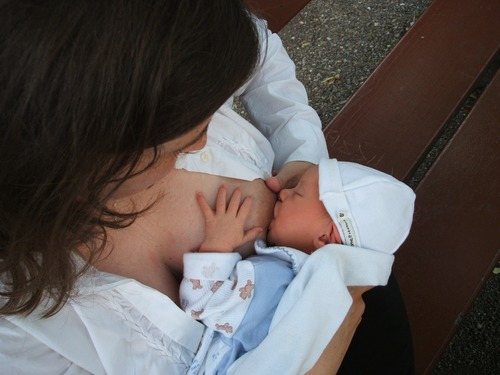
If you follow our massage recommendations, lactostasis should leave you very quickly. This is what we wish for you!
Recommendations for nursing mothers
- It is necessary to understand the cause of lactostasis and eliminate it.
- If there is stagnation, then there is no need to try to strain it immediately after feeding the baby. The brain perceives this action as a signal that the baby does not have enough milk, and secretion by the mammary glands increases, and lactostasis progresses.
- To reduce lactation, limit the amount of liquid you drink and exclude warm drinks from your diet.
- Camphor-alcohol compresses can cause milk burnout and stop the lactation process.
- Any treatment method will be more effective if it is accompanied by a diet. Fatty, spicy, hot, rich foods are excluded from the diet. The use of beets and prunes is recommended.
- A fresh cabbage leaf compress on the painful area may help. The vegetable is washed, a leaf is separated from it, pricked with a knife until droplets of juice appear and placed under a bra for a period of 3 hours.
It is important to know! Lactostasis in the mother does not affect the child’s body. To alleviate a woman’s condition, the baby is applied to the sore mammary gland as often as possible. Active sucking expands the ducts and eliminates congestion.
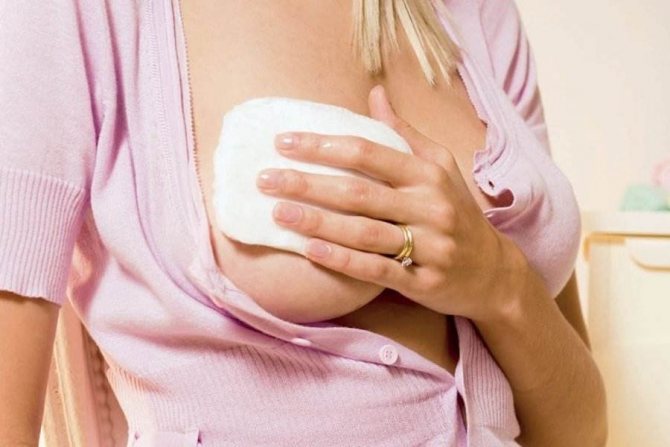
Read also:
How to increase lactation for a nursing mother?







